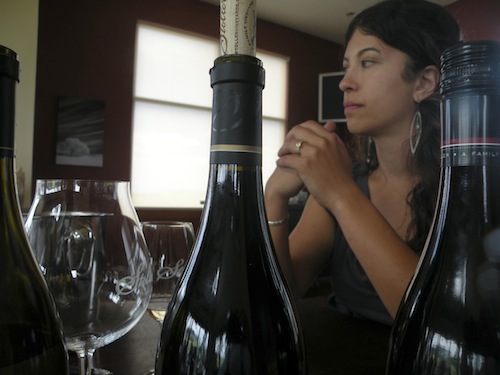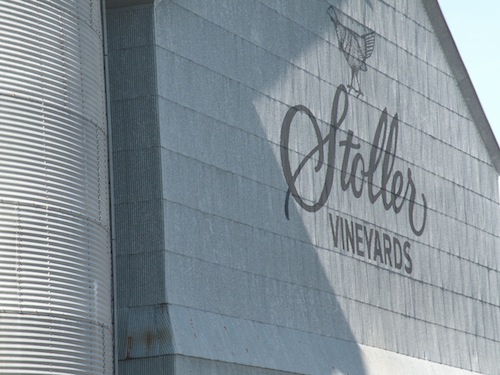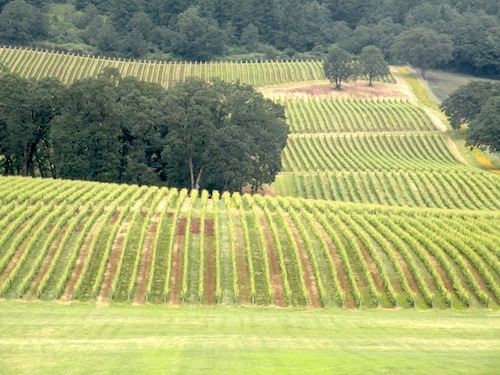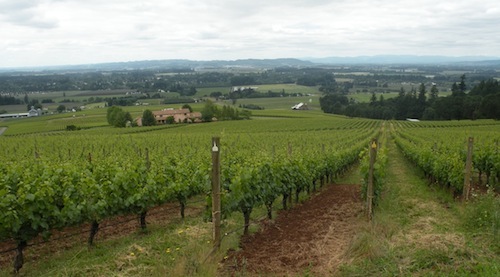
DAYTON, Ore. – When Melissa Burr decided to get into winemaking rather than medicine, she probably thought her education would be much easier.
Little did she know.
Burr, who grew up in Salem, was going to go into naturopathic medicine after earning a science degree at Portland State University. But then the wine bug bit her, so she changed directions in her life just as she was accepted into grad school.
In 2001, Burr was taking winemaking classes at Chemeketa Community College when she landed an internship at Cooper Mountain Vineyards in Beaverton. She figured she would clean tanks and barrels, learn how to start fermentations and probably do lots of punchdowns during her first vintage in the business.
But just as harvest was about to begin, the winemaker quit and Burr was put in charge of making an astonishing 16,000 cases. Fortunately, Burr was able to lean on Rich Cushman, who was consulting for Cooper Mountain at the time.
“It was a great opportunity,” she told Great Northwest Wine. “It was really a good chance to decide if you liked or hated it.”
This week on the Great Northwest Winecast, we chat with Burr, who now is head winemaker for Stoller Family Estate in the Dundee Hills. Here’s the interview:
[powerpress]
Moving to Stoller Family Estate

Bill Stoller, a third-generation Oregonian, was born on the farm he now owns. Between his birth and when he purchased the property from his uncle in the early 1990s, it was a farm where wheat and other crops were grown and turkeys were raised.
Stoller became a partner in Chehalem Wines near Newberg with Harry Peterson-Nedry, and that entrance into the wine business led him to plant a vineyard on the former turkey farm in the Dundee Hills and, ultimately, start Stoller Family Estate.
The first vintage was 500 cases and was made by Peterson-Nedry at Chehalem. In 2003, Burr was hired as Stoller’s first full-time winemaker and also finished her employment at Cooper Mountain – essentially working two harvests in one year.
For the next two years, Burr made Stoller’s wines at Chehalem under the tutelage of Peterson-Nedry. Having him as her mentor during those early vintages and beyond has been a huge boost to her abilities and confidence, she said.
In 2005, Burr was part of a team that helped design and build a winemaking facility at Stoller Vineyard, which is south of the town of Dundee on Highway 99W. It was built to be environmentally friendly, with lots of reclaimed materials used in its construction and solar panels to help power it.
In fact, it was the first LEED-certified winery building in the United States, a certification process that was long but rewarding.
“We did a lot of paperwork to get that accreditation,” Burr said. “I think once is enough for that.”
Thus, when Stoller built a gorgeous new tasting room, it chose to not go through the process again. The new tasting room is a zero-energy building with large roll-up glass walls that face the 193-acre vineyard and is loaded with features such as a solar array.
Growing with Stoller

When she moved into the new winery in 2005, Burr’s production for Stoller was about 3,000 cases. Today, it’s pushing 20,000 and growing. She laughed at the acknowledgement she’s finally making more wine than she did during that internship at Cooper Mountain.
All of her fruit comes from estate grapes, and Burr focuses on Pinot Noir and Chardonnay. She does have an acre each of Syrah and Tempranillo, primarily as experiments.
The property has room for perhaps 30 more acres of vines, and the Stoller team likely will continue to plant.
Burr takes only about half the grapes that are grown at Stoller, with the rest sold to such wineries as Chehalem, Argyle, Boedecker and Adelsheim.
Her lineup includes several separate and distinctive bottlings of Pinot Noir, as well as Chardonnay, Riesling, Tempranillo and Syrah. In 2013, Burr added sparkling wine to her repertoire. She is making fewer than 400 cases to start off, and it is aging in bottle for the next 18 to 24 months before it will be finished.
“It’s exciting,” she said. “We’ve been wanting to make sparkling wine for a long time.”
Wrapping up a great vintage at Stoller

Burr’s wines are resting in tanks and barrels after a warm, dry and largest harvest this fall. Historically, harvest starts at Stoller around Sept. 21. This year, it began on Sept. 5 and was mostly wrapped up by the end of September. There were no issues with weather, and the fruit came in clean, fast and furious.
Some of her Pinot Noirs are just beginning to go through malolactic fermentation, and she will inoculate everything for ML before Christmas. Her rosé is ready to be blended, as is the Chardonnay.
“Everything is resting, as it should be,” she said.
She is excited about potential for her 2014 wines. Even though they’re still young, her wines are starting to show gorgeous, vibrant fruit. She knows that the warm year meant higher sugars, which equals higher alcohols, and she has worked hard to minimize them.
It also was a big year, with a larger-than-expected crop that left the entire Oregon wine industry scrambling for extra tanks and barrels. Fortunately, Stoller was ready for the growth, and Burr held onto some barrels she normally would have sold, so she ended up with ample space for all the new wine.
“There will be a lot of 2014 wines out there,” she predicted.
Burr is looking forward to taking off a couple of weeks at the end of the year before diving into more winemaking in 2015. For her, 2014 will be a year to remember. In addition to the exciting harvest, Burr was featured on the cover of Wine Press Northwest magazine in the spring when Stoller was honored as Pacific Northwest Winery of the Year.
“It’s been a great year,” she said with a smile. “I’m really proud of Stoller. It’s come a long way. It’s been growing steadily, organically and thoughtfully. We have a really good team of people. It’s a good time to be in the industry.”

Leave a Reply